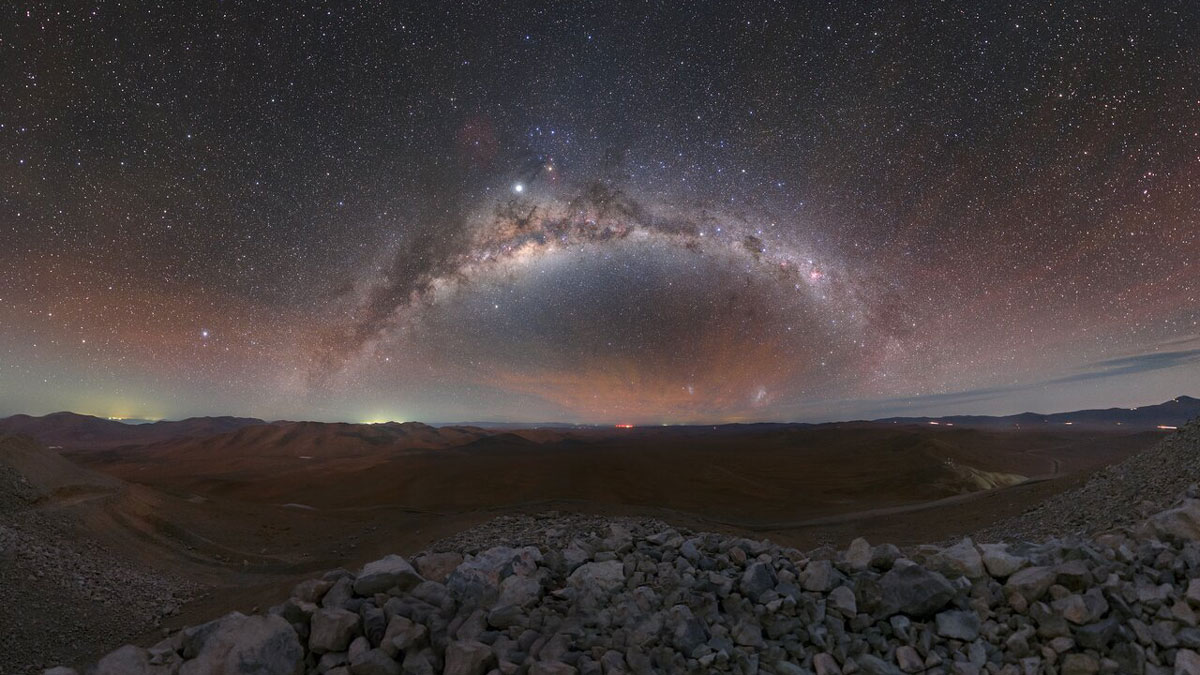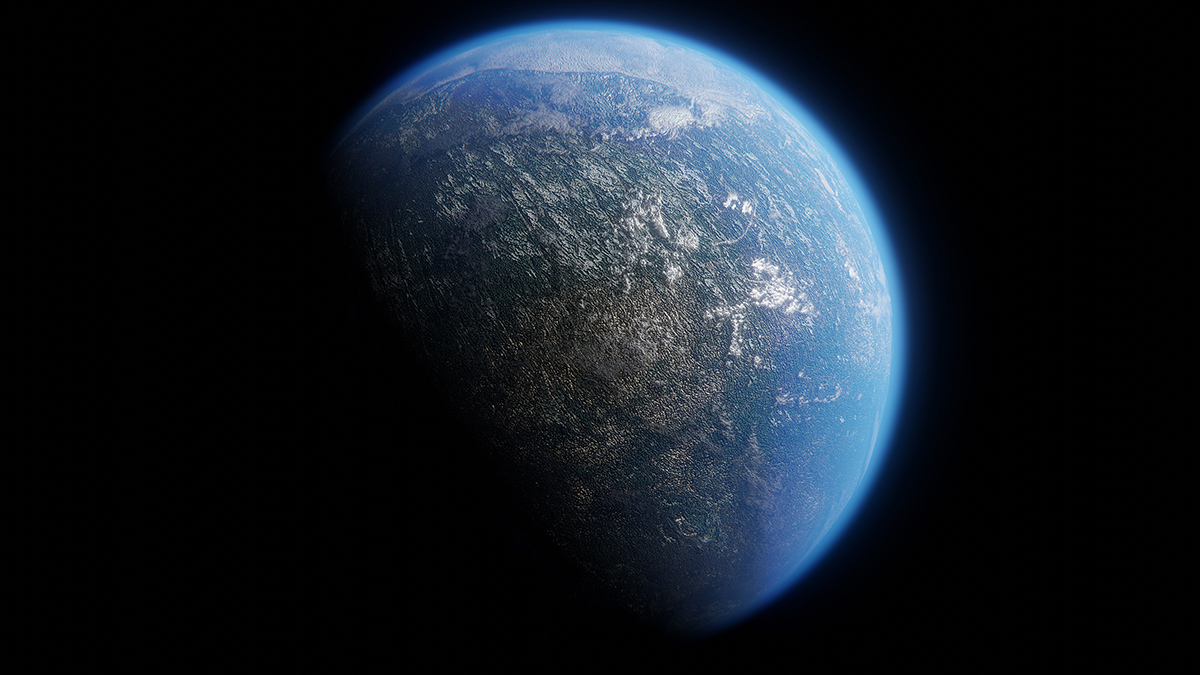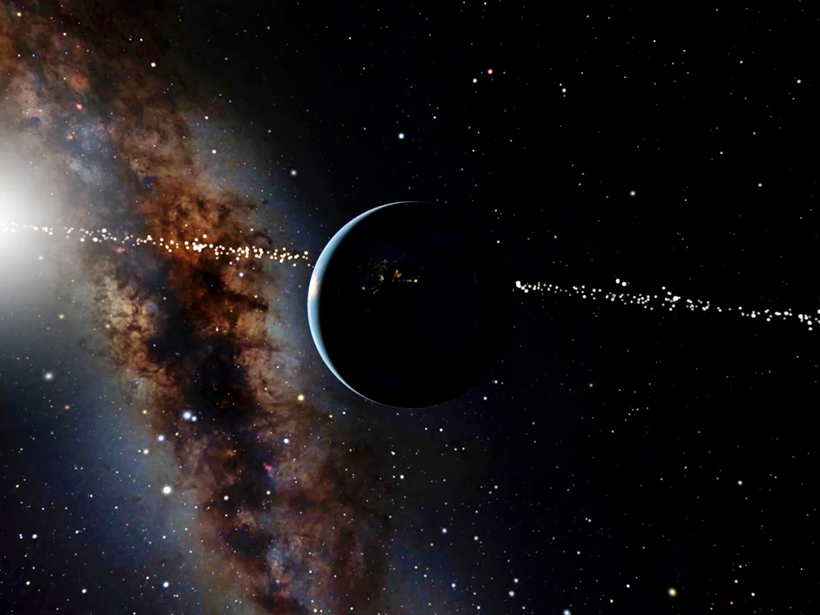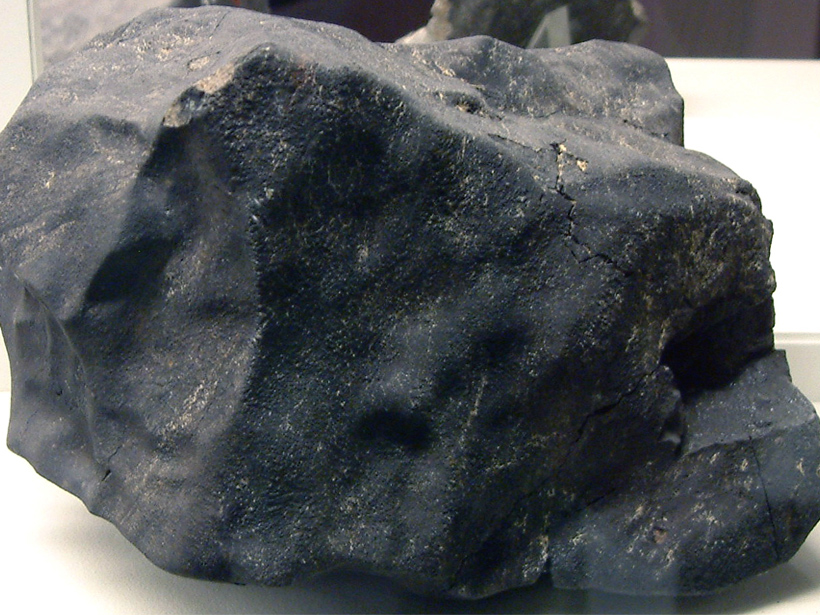Researchers found signs of melting in zircon crystals in the crust that correspond to our planet’s journey through the galaxy’s spiral arms.
Milky Way
A Super Speedy Star May Be Streaking Through Our Galaxy
Astronomers suggest the star is towing along an exoplanet. The system could be traveling fast enough to escape the Milky Way.
Anemic Stars Don’t Host Super-Earths
Planetary systems need the right stuff to make planets, and some stars just don’t have it.
A Step Closer to Solving the Fermi Paradox
Finding evidence of complex life elsewhere in the Milky Way galaxy hinges on locating rocky planets with plate tectonics and a mixture of landmasses and oceans, new research suggests.
Exoplanets May Support Life in the Terminator Zone
A new study finds that the intersection between a searing dayside and a freezing nightside could be habitable.
With MeerKAT, Astronomers Peer at the Possibilities of Radio Imaging
Stunning images of the center of the Milky Way showcase technology and techniques that may be a starting point for more discoveries.
Thousands of Stars View Earth as a Transiting Exoplanet
Researchers have identified more than 2,000 stars whose past, present, or future vantage points afford a view of Earth passing directly in front of the Sun, a geometry useful for pinpointing planets.
Dust Older Than the Sun Sheds Light on Galactic History
A small pile of dust grains older than the Sun brings new evidence about the rate at which stars are born in the Milky Way.
Wanted for Grand Theft Galaxy: The Milky Way
Several dwarf galaxies orbiting the Milky Way were likely stolen from the Large Magellanic Cloud.
Hunting for Planets Around Old, Anemic Stars
Can a star make planets with 10% of what the Sun had to work with? A synergy between two powerhouse survey telescopes is helping astronomers find that answer.










